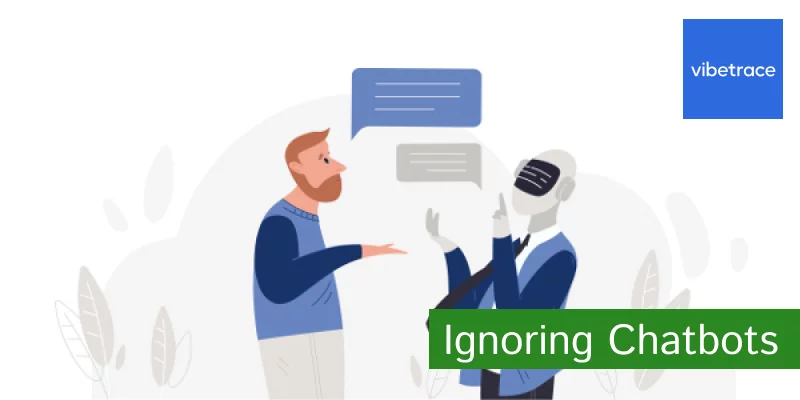It’s easy to get swept up in the hype around ecommerce chatbots.
They are often described as a speedier, more efficient, and cheaper way to interact with and engage with customers online. But, while they might be efficient and speedy, they’re just not that good and we have proof…
A whopping 94% of people ignore them.
Our latest research has revealed why consumers abandon one brand for another when shopping online. The results also unveil the different behaviours shoppers exhibit when looking for products.
One of the more crucial pieces of feedback, directly from the mouths of more than 2000 consumers, was that only 6% of buyers are using your chatbots while researching products.
Chatbots don’t substitute for guidance and advice
We know that customers are still craving that in-store advice and experience that they would get instore. Our research last year revealed what products consumers found difficult to buy.
Top reasons include difficulty browsing for products online (25%), confusing product specifications (21%) and not being able to ask a sales assistant for guidance or advice (21%).
Want to be up to date with Marketing?
Subscribe to our Retail CX newsletter!

Stay connected with what’s really important to optimize your digital revenues.
By clicking the button, you accept our Terms & Conditions. Also you will need to confirm your email address.
In the context of bringing the in-store experience online, chatbots and popups are often used to replicate the sales assistant that Brits say they are missing.
Contrary to popular belief, chatbots don’t cut it when it comes to delivering a good experience. The core problem with chatbots is that you have a human messaging a machine, and exasperation often ensues on the human end.
A chatbot pigeonholes you into a response – before you get the opinion of an expert, which is why you would want to talk to an agent for guidance.
There’s no real personalisation
As the ecommerce world becomes more crowded, one of the keyways to stand out is through personalisation. Chatbots only increase the appearance of personalisation and ultimately, they’re nothing more than interactive FAQs.
Chatbots have the appearance of being human, but they lack the empathy appear to be collecting the data about you. If a chatbot says “sorry for your experience”, it comes across as insincere.
Chatbots provide a scalable way to interact one-on-one with buyers, but they fail to have complex, multi-layered conversations people are accustomed to having with other humans on messaging apps.
Interrupting the online experience
The line between adding value and causing frustration or interrupting a shopping experience is thin. Considering most consumers would rather you didn’t use automated chatbots, that line is almost always crossed.
Almost inevitably, you leave the thread with less information to answer your query and irritated. Chatbots can be pushy.
What little personalisation they can attempt comes in the form of invasive questions early on. Often, you’ll find that the first two questions they ask will be your full name and email address. This forces customers to commit before they’ve even voiced their questions.
Who wants to sign up to an email list that way?
Yes, 21% of respondents say the ability to get recommendations on the site and 19% say the ability to get advice and guidance on the site would give them more confidence to buy.
But both chatbots and pop ups are not the strategies to answer the call for advice and guidance. The proof is in the numbers.
There is a better way to guide customers
Guidance and advice like you would get from an in-store experience should start with the same requirements: empathy, product knowledge and understanding.
There is tech out there that can help you guide your customers to the product they are looking for while giving them the confidence to buy from you.
Guided selling software simulates the in-store consultation process, helping customers find and purchase the right products online – with confidence.
From product recommendations to problem-solving sequences, guided selling tools give customers the guidance they are looking for increasing the chance of conversions and boosting your economy.
Additionally, these tools help a brand interact and engage with a customer in a meaningful way. One tactic that really entices interaction with a customer is a digital shopping assistant that sits onsite to help simplify decisions.
This technology fires at the right time, guiding a customer through a path of considered questions (like the in-store assistant), narrowing down the search list to the most optimal product to suit their need.
In our case, this tool is called Digital Assistant.
It is your online personal assistant, helping to sell products and support customers. Better yet, it will drive better customer experience, increase your conversion rates, AOV and grow revenue. It is the same sales assistant described earlier who can respond to the customer needs.
Yes, you could argue that, like a chatbot, there is an element or prescribed content used by Digital Assistant that potentially misses out on social cues.
But, like the in-store sales assistant, this solution can be set up to be switched on and observant, picking up on a customer’s hesitation to purchase and providing the solution. And you can learn from it.

